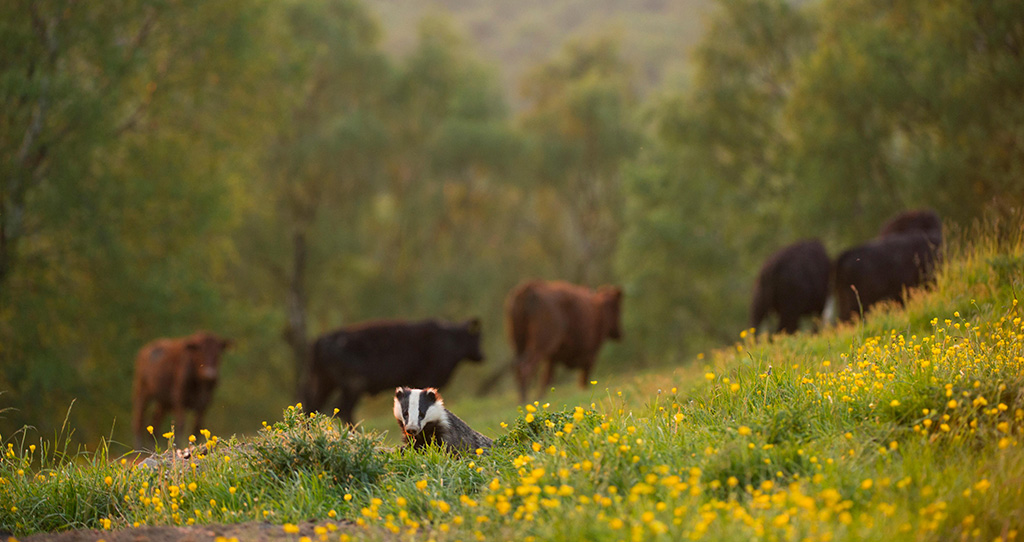Controlling bTB in wildlife

In the UK, badgers are protected animals and have had legal protection since the Badger Act in 1973. Find out how bTB affects badgers and the science behind badger culling.
Badgers are particularly vulnerable to bTB because they spend most of their life underground sharing the same air space and tunnels, which makes it easy for the disease to spread.
Their ability to live with bTB and easily transmit it to other badgers, cattle and farm buildings makes them almost the perfect hosts for it.
In 2007, the ISG (Independent Scientific Group) found there was a 40% infection rate among badgers in bTB hotspots.
The evidence supporting badger culling
The latest scientific peer-reviewed evidence published by Birch et al in the Nature Journal evaluated the effects of the BCP (badger control policy) on bTB in England.
Examination of TB incidence rate across 52 licenced areas across many years concluded that in the fourth year of culling, the cattle herd incidence rate of TB fell by 56%.
The greatest declines in TB breakdown incidence were achieved in years two and three of BCP interventions. The study provides significant evidence that the BCP policy reduces disease transmission risk where there is a reservoir of disease in the badger population.
Existing control licences are due to end by 2026; Defra has consulted on evolving policy to include targeted badger interventions where disease transmission from the badger population is a key factor and enhanced cattle measures.
This analysis indicates the importance of reducing transmission from badgers to reduce the incidence of TB in cattle, noting that ‘vaccination of badgers, fertility control and on-farm biosecurity may also achieve this effect’ (Birch et al).
Downs et al’s 2019 study and Defra’s latest annual TB monitoring data found there were significant reductions in bTB in cull areas after four years of intensive culling compared to non-cull areas.
The RBCT (Randomised Badger Culling Trial) also recommended culling 70% of badgers to reduce TB outbreaks in cattle herds.
Bovine TB cases are at their lowest level since 2007 in England, with fewer animals being slaughtered.
The evidence suggests that controlled badger culling, when done responsibly, can play a significant role in reducing the spread of bTB, benefiting both wildlife and livestock.
Badger culling
The UK has signed the Bern Convention of the Council of Europe, which prohibits the local extinction of endangered or protected species. The Standing Committee of the Convention is satisfied that the planned control in England does not breach the terms of the convention.
Badger culling is carried out under legal licences as part of a government policy to reduce disease transmission. The two authorised methods of culling badgers are controlled shooting or cage trapping and dispatching.
Farmers and landowners organise and pay for culls, following government guidelines for safety, effectiveness and humane treatment.
The perturbation effect
This is when the amount of bTB incidents increase outside of a cull zone because the infected badgers leave and spread the disease.
The perturbation effect is managed in wildlife control zones by using hard boundaries around the zones, like rivers or motorways.